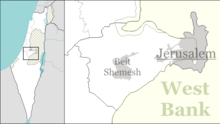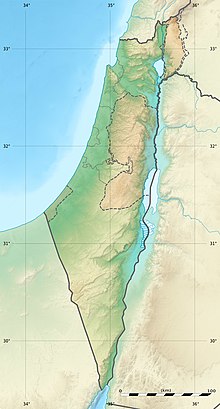Siege of Jerusalem (1244)
| Siege of Jerusalem | |||||||||
|---|---|---|---|---|---|---|---|---|---|
| Part of the Crusades | |||||||||
| |||||||||
| Belligerents | |||||||||
|
Ayyubid Sultanate Khwarazmians |
| ||||||||
| Commanders and leaders | |||||||||
|
| Unknown | ||||||||
| Strength | |||||||||
| 10,000 | unknown | ||||||||
| Casualties and losses | |||||||||
| unknown | unknown | ||||||||
Location within Jerusalem | |||||||||
| Part of a series on |
| Jerusalem |
|---|
 |
The 1244 siege of Jerusalem took place after the Sixth Crusade, when a Khwarazmian army conquered the city on July 15, 1244.[citation needed]
Prelude
Emperor Frederick II of the Holy Roman Empire led the Sixth Crusade from 1228 to 1229 and claimed the title of King of Jerusalem as the husband of Isabella II of Jerusalem, queen since 1212. The army brought by the emperor and his reputation in the Muslim world were enough to recover Jerusalem, Bethlehem, Nazareth and several strongholds without fighting, as signed by a treaty with the Ayyubid Sultan al-Kamil. However, Jerusalem did not remain in the hands of Christians for long, as, despite further territorial gains a few years earlier in the Barons' Crusade, the latter did not control the surroundings of the city sufficiently to be able to ensure an effective defense.
The Khwarazmian army consisted of 10,000 cavalry, comprising both some of the remnants of the predominantly
Battle
In 1244, the Ayyubids allowed the Khwarazmians, whose empire had been destroyed by the
Aftermath
The sack of the city and the massacre which accompanied it prompted the Crusaders to assemble a force to join the Ayyubid forces and fight against the Egyptian and Khwarazmian forces in the
References
- ^ R. Stephen Humphreys (1977), From Saladin to the Mongols: The Ayyubids of Damascus, 1193–1260, State University of New York Press, p. 275.
- ^ Gilbert, Martin (1978). Jerusalem: Illustrated History Atlas, p. 25. New York: Macmillan Publishing.
- ISBN 978-0-241-29877-0.
- ISBN 978-1-905704-58-3.
External links
- The Siege on Orthodox Wiki
- The Siege on Encyclopædia Britannica
- The Siege on WZO.org, Timeline: History of Jerusalem
- The Siege on The Jewish History Resource Center


